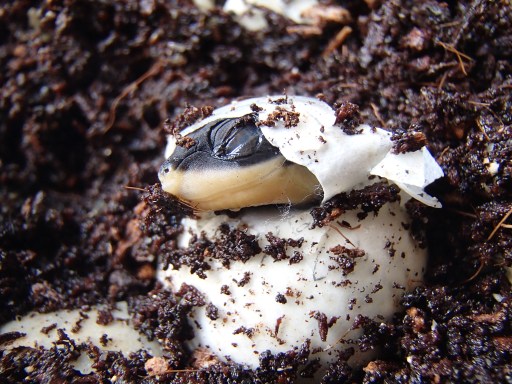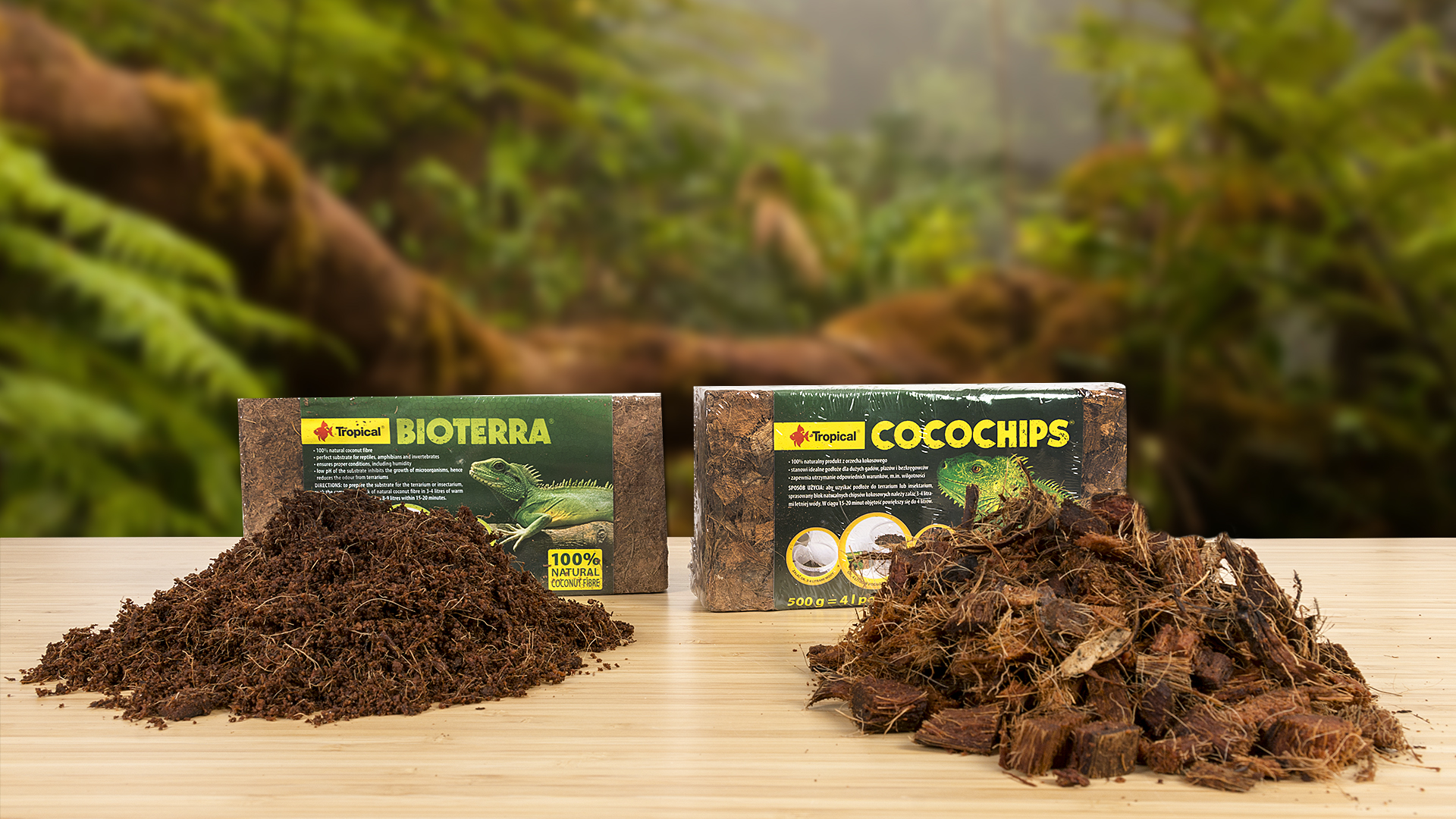Coconut fiber – more than just a cheap soil!
For many years, coconut fiber has been a staple product used to keep terrarium animals. It is a cheap, renewable resource derived from the outer layer of the coconut – the husk. Coconut fiber is available in the form of compressed bricks. They can consist of larger fragments, most often called “coco coir”, “coco husk” or “coco chips” (as in Tropical Cocochips) or small, short parts (as in Tropical Bioterra) which are known as “coco humus” or “coco soil”. After adding some water to such a compressed block, it significantly increases its volume (about 6 – 8 times). The water absorbed by the substrate slowly evaporates. This process can be repeated many times, making this raw material suitable for many different applications.
Composition of coconut fiber
Coconut fiber is composed of 45% lignin (a polymer, the basic component of wood) and 44% cellulose (a polysaccharide that builds plant cell walls). Other components e.g. tannins give fiber its antistatic, antifungal and antibacterial properties and create an acidic environment when in contact with water.
Coconut as a substrate for terrarium and plants
Peat used to be the main substrate used for gardening and in terrariums. However, as peat bogs became endangered, and the use of peat was to be reduced to a minimum, coir seemed the most obvious material to replace it. You can add water to it and use it on its own or in combination with other materials such as sand, moss or leaves.

Typically, coconut fiber is used in forest terrariums or for growing plants that like moist soil. However, reptiles living in deserts will be also pleased with it if it is used for creating a damp shelter or for laying eggs.

Coconut as a substrate for fish breeding
Coconut fiber is not only a great terrarium substrate. It can also be used as a substrate in aquariums. Many species of annual fish (e.g. Aplocheilus, Nothobranchius) spawn in the substrate. The container with the substrate and the eggs is removed from the water and left to dry. In this way, the eggs can be stored for months. When the breeder floods the substrate with water again, hatching takes place. Coconut fiber in the aquarium also gives water slightly brown color, which can be used in black-water tanks.

Coconut as a substrate for terrestrial animals breeding
The most popular egg incubation substrates for reptiles on the market include Vermiculite and Perlite. However, coconut fiber works well for many species that have special requirements during egg incubation.

In the case of reptile eggs with soft, leathery shells, coconut fiber provides necessary humidity while protecting the eggs from direct contact with water while in many species that have eggs with hard, brittle shells, especially those known for hatching problems, coconut fiber creates an acidic environment that slowly dissolves the eggshell. This makes the shell thinner and thus easier for the hatchling to break. And remember that you have no reason to panic if the previously white eggs turn brown. The staining of eggshells is caused by tannins and is not dangerous to the embryos.


When coconut fiber should NOT be used
Despite many benefits of coconut fiber, it is not recommended for all animals. Decomposing or ground-dwelling invertebrates like pill bugs, centipedes or beetle larvae might not enjoy the acidic pH level of the soil and pure coco fibers will not contain enough nutrients to fulfil their dietary needs. Here, a fermented soil mix or topsoil from the forest will be a far better option.


Summary
I would like to encourage readers to experiment with coconut fiber. Thanks to its many beneficial properties, it can be used in various aquariums and terrariums.










